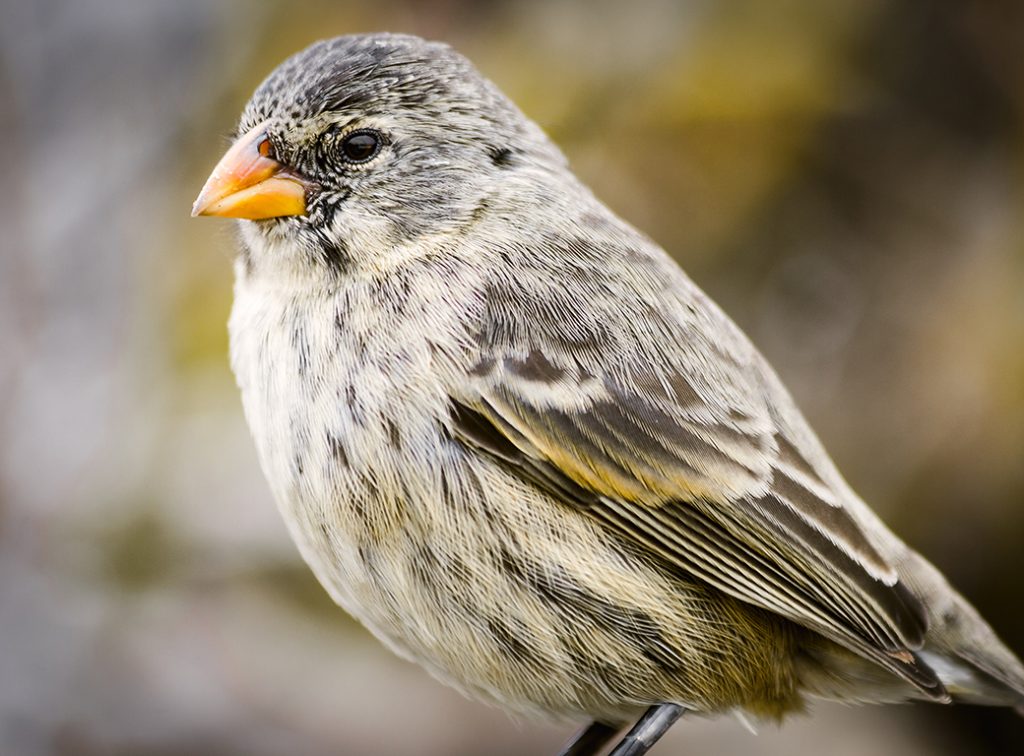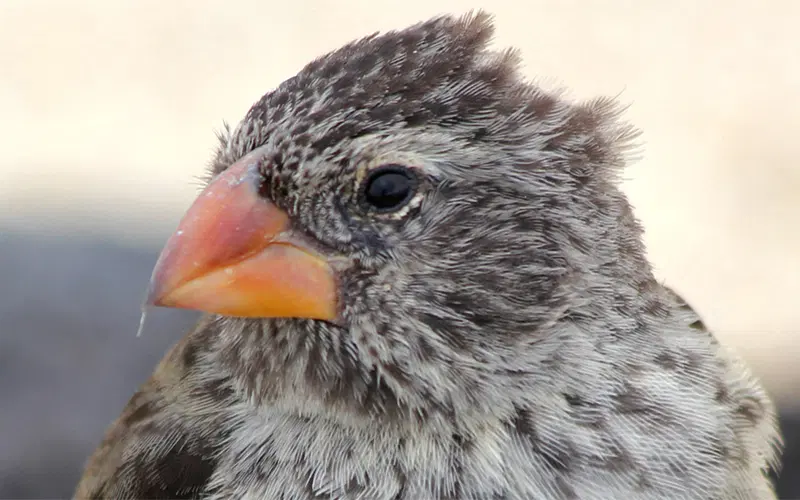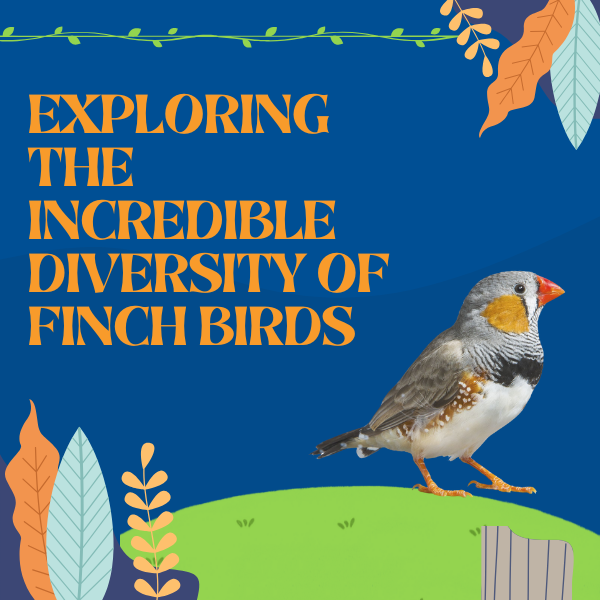If you’ve ever heard the name Darwin, you’re probably familiar with his famous theory of evolution, and most likely, you’ve heard about his iconic visit to the Galápagos Islands. But do you know about the Darwin’s finches? These small, seemingly unremarkable birds played a huge role in shaping our understanding of how species evolve. In fact, they’re one of the best examples of evolution happening right before our eyes.
In this article, we’re going to take you on a journey through the story of Darwin’s finches, their fascinating role in evolutionary biology, and how these tiny birds revolutionized the way we think about life on Earth. But first, let’s start with a little background.

Who Are Darwin’s Finches?
Darwin’s finches are a group of small songbirds that live on the Galápagos Islands, a chain of volcanic islands located about 600 miles off the coast of Ecuador in the Pacific Ocean. There are 15 species of these finches, all members of the family Geospizidae, and they are primarily seed-eaters.
At first glance, they might seem like just another group of finches. They’re small, typically brown or gray, and aren’t particularly flashy. But they are special for one very big reason: their diversity in beak shape, size, and function, which directly relates to their diet and how they’ve adapted to the different environments across the islands.
The Story Behind Darwin’s Discovery
The story of Darwin’s finches goes back to 1835, when Charles Darwin visited the Galápagos Islands during his famous voyage aboard the HMS Beagle. At the time, Darwin wasn’t fully aware of the significance of what he was observing. While exploring the islands, he noticed a number of different species of finches. What stood out to him, however, was how the birds’ beaks varied from one island to another, and how they seemed to be adapted to different types of food sources.
Darwin collected several specimens and made sketches of them, but it wasn’t until years later, after he returned to England, that he began to understand the importance of his observations. Over time, he realized that these finches were a living example of how species could adapt to their environment through natural selection.
His observations, combined with the idea that species could change over time based on environmental pressures, helped Darwin develop his groundbreaking theory of evolution by natural selection, which he would eventually publish in On the Origin of Species in 1859.
In other words, Darwin’s finches were among the first clues that led him to discover how evolution works!
The Role of Beak Variation in Evolution

What really sets Darwin’s finches apart is the incredible variation in their beaks. The different species of finches on the Galápagos Islands have beaks that are specialized for different types of food. Some birds have long, pointed beaks for catching insects, others have strong, thick beaks for cracking seeds, and some have sharp, slender beaks perfect for eating flowers and nectar.
This variation in beak morphology is a prime example of how evolution works. Over many generations, finches on each island adapted to the specific food sources that were available to them. The birds with beaks better suited to their environment were more likely to survive, reproduce, and pass on their traits to their offspring.
For example, finches that lived on an island with lots of hard seeds developed stronger, more powerful beaks to crack those seeds open. Meanwhile, on another island where insects were plentiful, finches with longer, thinner beaks thrived because they were able to reach deep into flowers or tree bark to grab insects.
This process, called adaptive radiation, occurs when a single species diversifies into a variety of forms to fill different ecological niches. In the case of Darwin’s finches, one species of finch likely arrived on the islands from the mainland, and over time, that one species evolved into several different species, each suited to the particular conditions of the island they inhabited.
Adaptive Radiation: How Darwin’s Finches Evolved

To really understand the evolution of Darwin’s finches, we need to talk about adaptive radiation in more detail. This process happens when a species enters a new environment with many unfilled niches (or available ecological roles) and evolves into different forms to take advantage of those niches.
In the case of Darwin’s finches, they all share a common ancestor—a finch that probably came from the mainland of South America millions of years ago. Over time, these birds spread out across the Galápagos Islands and evolved in response to the different environmental conditions on each island. The differences in food sources, weather patterns, and available habitats on each island led to the development of unique species.
Here’s an example: one of the species of finches, called the medium ground finch, has a medium-sized beak that’s perfect for eating seeds. But on islands where only small seeds are available, the finches with smaller beaks had an advantage, while on islands with larger seeds, the finches with bigger, stronger beaks survived better. Over time, those differences led to the formation of different species that were better suited to their respective environments.
This process, where different species evolve from a single ancestor by adapting to different food sources and habitats, is one of the clearest demonstrations of natural selection at work.
The Impact of Darwin’s Finches on Evolutionary Biology
Darwin’s finches are often considered one of the most important examples of evolution in action. Their beak variations provide clear evidence that natural selection can cause changes in species over time. But they also show us something else: the role of isolation in shaping species.
The Galápagos Islands are a perfect example of how geographical isolation can lead to the formation of new species. The islands are physically separated from one another and from the mainland by hundreds of miles of ocean. This isolation allowed the finches to evolve independently on each island, leading to the development of distinct species.
Isolation is one of the key drivers of speciation—the process by which new species arise. When populations of a species become isolated from each other, whether by physical barriers or geographical distances, they can begin to evolve in different directions based on the unique conditions they face. Over time, these differences can become so pronounced that the populations are no longer able to interbreed, resulting in the creation of new species.
This idea of geographical isolation leading to speciation was revolutionary at the time and helped to solidify the concept of evolution. Before Darwin, many people believed that species were fixed and unchanging. But Darwin’s finches showed that species could evolve and change in response to their environment.
The Legacy of Darwin’s Finches
Today, Darwin’s finches continue to be a central part of the study of evolution. Researchers still study these birds on the Galápagos Islands, observing how their populations continue to adapt to changing environmental conditions. For instance, some scientists have even documented how beak sizes have changed over just a few generations in response to changes in food availability, such as during periods of drought when seed types on the islands become scarcer.
The ongoing research on Darwin’s finches is a perfect example of how evolution is a dynamic process that can be observed in real-time. Scientists continue to learn more about how natural selection, genetic variation, and environmental pressures work together to shape the diversity of life.
But beyond their role in science, Darwin’s finches also hold a deeper symbolic meaning. They are a reminder of the incredible adaptability of life and the complexity of the natural world. They teach us that evolution isn’t just something that happened millions of years ago—it’s something that continues to happen right now, in the world around us.
The Importance of Protecting Darwin’s Finches
While Darwin’s finches are a fascinating example of evolution, they are also facing serious threats. The Galápagos Islands are a fragile ecosystem, and the finches, along with many other species, are vulnerable to the impacts of habitat loss, invasive species, and climate change.
Invasive species, such as rats and ants, have been introduced to the islands by humans and have caused harm to the native wildlife, including the finches. Habitat destruction, whether through tourism or climate change, also puts pressure on the delicate ecosystems that support these birds.
Because of these threats, it’s crucial to protect the Galápagos Islands and the species that live there. Conservation efforts are ongoing, with scientists and local authorities working together to safeguard the environment and preserve the unique species that call the islands home.
How Endemic Finches Adapt to Their Environment
One of the most exciting aspects of endemic finches is how they adapt to their specific environments. This adaptation happens over long periods of time, driven by the selective pressures in the bird’s surroundings.
1. Beak Shape and Size
The most obvious example of adaptation in finches is the shape and size of their beaks. Finches are well-known for their beak morphology, which is directly tied to their diet. Endemic finches often have beaks that are specialized for the type of food available in their environment. For example:
- Finches living in regions with abundant seeds may develop larger, stronger beaks that can crack tough shells and seeds.
- In contrast, finches in areas with abundant insects might have slender, pointed beaks that are well-suited for catching small prey.
This kind of adaptation helps finches to survive in their unique environments and is a key factor in why they can only thrive in certain regions.
2. Behavioral Changes
Endemic finches also undergo behavioral adaptations to suit their environment. For example, some finches might become territorial to protect their limited resources, while others might have cooperative breeding strategies where multiple individuals help raise offspring. These behaviors are often driven by the specific challenges of their environment, such as limited food resources, predators, or competitors.
For example, finches living on islands with few predators may have evolved to be less fearful of humans, making them easier to study and observe. Meanwhile, finches in harsher environments may exhibit more cautious behavior to avoid threats.
3. Feeding Habits and Diet
As we mentioned earlier, the diet of an endemic finch is often one of the most important factors in its adaptation. Some finches may feed exclusively on certain types of seeds, berries, or insects, depending on the resources available in their environment. These feeding habits are closely tied to the beak structure and the bird’s ability to access and process food.
In isolated ecosystems like islands, finches often become picky eaters, specializing in foods that are unique to that particular habitat. This is especially true in places like the Galápagos Islands, where finches have evolved to take advantage of specific food sources that are abundant on their islands.
The Threats Facing Endemic Finches
While endemic finches are fascinating creatures, many of them face significant threats due to habitat loss, climate change, and introduced species. These birds are often highly specialized to their environments, which means that any changes to those environments can have devastating effects.
For example, the introduction of non-native predators like rats, cats, or mongoose can lead to the rapid decline of endemic finch populations. These predators prey on eggs, chicks, or adult birds, devastating populations that have no natural defenses. Climate change also poses a threat to endemic species, as it can alter the habitats they depend on, making it difficult for them to survive.
Conservation efforts are crucial to protecting endemic finches and their habitats. Many species are now protected by law, and there are active breeding programs, habitat restoration projects, and educational efforts aimed at raising awareness about these unique birds.
Why We Should Care About Endemic Finches
So, why should we care about endemic finches? Beyond their intrinsic beauty and uniqueness, these birds serve as a reminder of the importance of biodiversity and conservation. They show us how life evolves in response to environmental pressures and how delicate ecosystems can be. Protecting endemic species like these helps preserve the richness of our natural world, ensuring that future generations can experience the same wonders we enjoy today.
In conclusion, endemic finches are some of the most fascinating creatures on Earth. From the famous Darwin’s finches of the Galápagos Islands to the unique Cocos Finch, these birds offer us a glimpse into the wonders of evolution and the importance of ecological diversity. By understanding and protecting these remarkable species, we ensure that their unique stories continue to unfold for generations to come.
Conclusion
Darwin’s finches are more than just a group of birds—they’re a living testament to the power of evolution. Through their beak variations and ability to adapt to different environments, they’ve helped to shape our understanding of how species change and evolve over time.
From the moment Darwin first observed them on the Galápagos Islands, these finches have captivated scientists and nature lovers alike. They remind us that evolution is an ongoing process, and that the world is constantly changing in ways we may not always see. And as we continue to face challenges like climate change and habitat loss, these finches also remind us of the importance of protecting the natural world and the species that depend on it.

